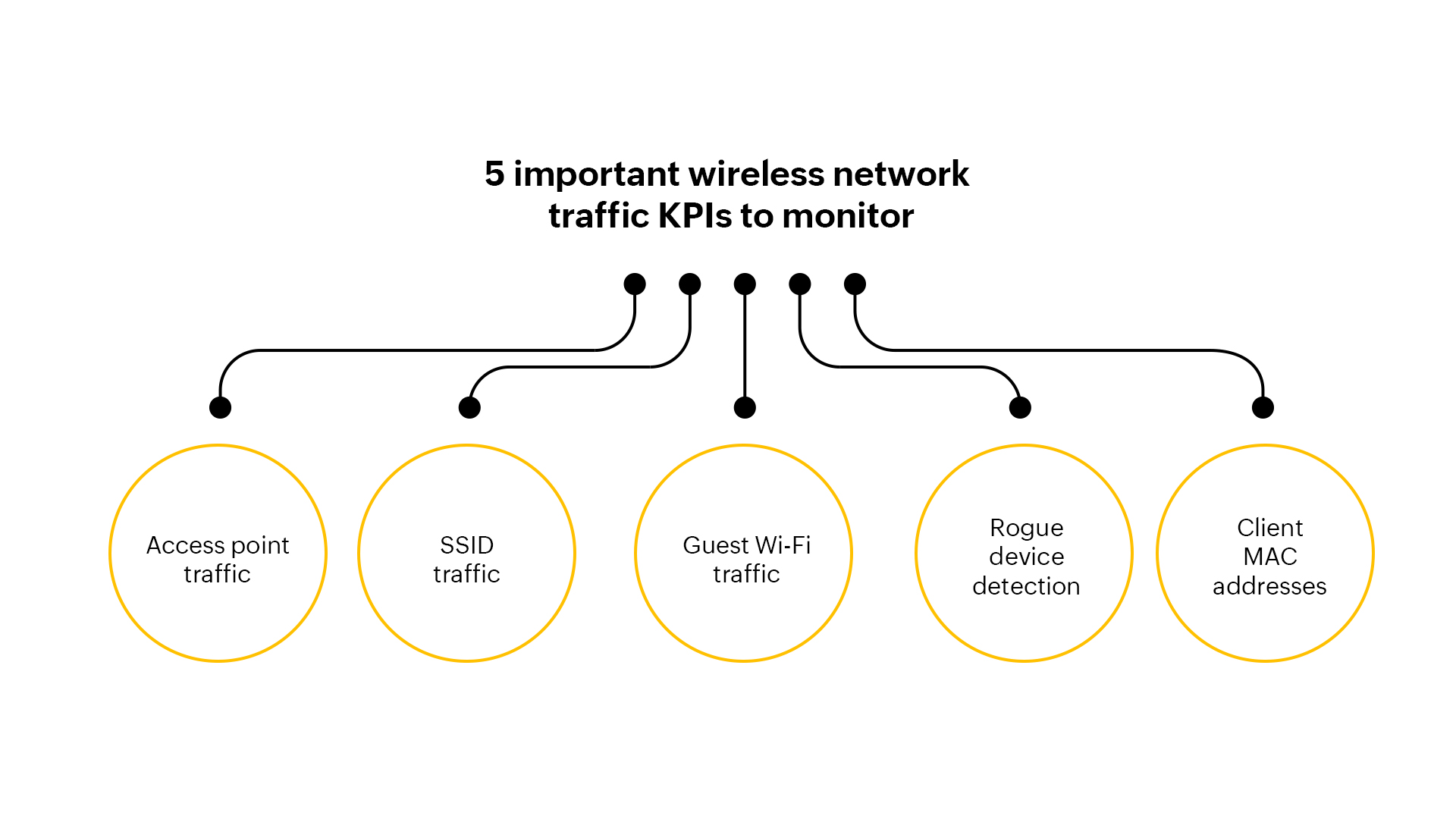Wireless networks have become even more important in organizations as they increasingly adopt the bring your own device (BYOD) culture. The increase in the number of devices in an organization's environment makes it difficult to maintain optimal internet performance. While wired network monitoring is important, it is also necessary to monitor wireless networks since they hold even more significance.
Whether dealing with security or network performance issues, monitoring wireless devices, such as access points, is necessary since they will be used by many users simultaneously. From checking if mission-critical devices are transferring data continuously to monitoring for rogue devices, monitoring wireless traffic can be extensive and also sometimes painstaking.
There are many aspects that a network admin has to consider to monitor network traffic extensively. Cross-checking all the metrics every day takes a lot of time and effort and is unnecessary because they are not all relevant all the time. Streamline your WiFi traffic monitoring and make it more effective by focusing on this list of significant KPIs that can help you ensure uninterrupted wireless network performance.
Wireless devices in an organization greatly contribute to the network's performance, productivity, and user experience. With in-depth visibility into all the access points and SSIDs, you can monitor the overall traffic percentage and solve all your bandwidth-related issues.

On the one hand, access points benefit businesses by making their networks available to many users. On the other hand, the more access points you have, the greater the traffic and bandwidth utilization will be. This could leave no bandwidth for other operations.
Therefore, the traffic should be analyzed regularly, with a focus on which of its associated clients, applications, or SSIDs are consuming the most bandwidth. By analyzing the traffic of each of these nodes, common network issues such as slowness and network congestion can be avoided.
In an organization comprised of many SSIDs, there is a high chance of rogue devices using the network. By monitoring SSIDs, you can find the unregistered devices using the network and the traffic percentage of guest Wi-Fi usage. Based on the security and benefits of the unregistered devices, you can either restrict access to particular clients or shape the traffic for a few applications based on their significance.
Along with the organization's regular Wi-Fi network, checking what traffic is passing through your guest network is mandatory. Even though this guest network is isolated from the company's network, there is always a chance that a user accessing the guest Wi-Fi might penetrate your main network to steal information. Monitoring the guest network's traffic gives you visibility into what and who is using your network and helps you block or restrict access for that link or IP address alone.
Rogue devices can cause the most harm to your network. Though the BYOD culture may be beneficial for productivity, with so many devices being used, there is a high risk of rogue devices connecting to your corporate network. Since most devices lack firmware and security upgrades, this paves the way for hackers to intrude into your corporate network. Without wireless network bandwidth monitoring, you will not be able to identify rogue hosts and devices compromising your network's security.
Listening in on conversations of your wireless network's traffic provides you with information about how much bandwidth has been utilized by a particular device or IP address. By knowing the traffic volume and what applications a particular user is using, you can decide if you want to allow them to access your network. By knowing the users connected to a particular access point and identifying where the most bandwidth is being consumed, you can address any bandwidth bottlenecks.
The ideal wireless traffic monitor gives you in-depth visibility into the traffic percentage of each node of the network.
NetFlow Analyzer is a WiFi traffic monitoring tool that provides complete visibility into the traffic of wireless devices, such as access points, switches, and laptops, in your network. You can view the bandwidth usage of wireless controllers and the traffic of all their associated access points, SSIDs, and clients. You can also pinpoint what is causing a network slowdown. Our wireless traffic monitor software's real-time traffic data shows you the users of your network and what applications or links they are accessing, letting you take action to block or restrict particular applications or client IP addresses.
Now extend your WiFi traffic monitoring advantages with ManageEngine OpManager. Get real-time data on the signal strength of rogue devices, set threshold alerts, and view the wireless network topology with network visualization tools for effective wireless network traffic monitoring.